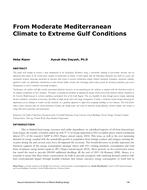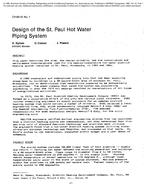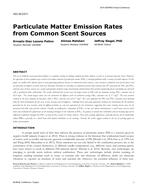A vital step towards understanding the overall performance of residential heating, ventilation, and air conditioning (HVAC) filters is measurement of their efficiency. However, existing filter efficiency measurements are either performed at a certain set of test conditions in a laboratory or, when short-term in-situ measurements are performed, capture a snapshot of filter efficiency. In this study, we introduced a novel method to measure the integrated in-situ efficiency of residential filters over their lifetime. The method uses 37 mm [1.45 in] filters attached, in different locations, on the upstream and downstream surfaces of the filters and gravimetric weighing to assess efficiency. To evaluate the method, we conducted 3-month measurements in five single-family residential houses in Toronto, Canada. To validate this efficiency measurement method, we compared our results with a short-term in-situ mass-based PM10 efficiency measurement of the same filters in the same systems. In general, the PM10 short-term efficiency was smaller than the long-term in situ efficiency. To explore this difference, we used a laser diffraction particle sizer (LDPS) to confirm that many of the particles on the filter were larger than 10 μm. We then applied a correction to account for the proportion of the particle mass that was larger than 10 μm. This correction improves the agreement between the efficiency measures. Overall, the results suggest that this new long-term method is a good overall assessment of filter efficiency that, distinct from other efficiency measurement approaches, provides the integrated efficiency of the filter based on the mass of all airborne particles.
Citation: 2018 Annual Conference, Houston, TX, Conference Papers
Product Details
- Published:
- 2018
- Number of Pages:
- 8
- Units of Measure:
- Dual
- File Size:
- 1 file , 1.9 MB
- Product Code(s):
- D-HO-18-C012


